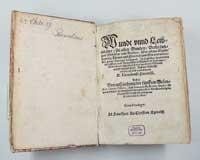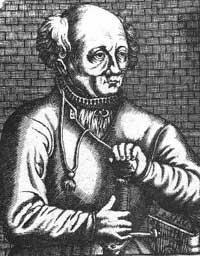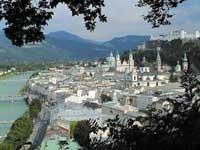Paracelsus: revolutionary of medicine

Paracelsus must be placed in the artistic, literary and scientific renaissance of the Renaissance. He was born on November 10, 1493, in the village of Eisendeln, Switzerland. Leonardo da Vinci, Copernicus and other scientists were contemporary.
He received from his father the first medical bases and then studied medicine at several European universities. However, he did not receive any degree, since before completing his studies he left university. Among the doctors of the time, the theories of classical authors such as Galeno and Avicena had a huge strength and Paracelsus was nothing in agreement with their ideas.
He left university and began to travel around Europe. He studied Alchemy and participated in numerous wars in the role of surgeon. In these displacements he began to elaborate new theories on the sources of the disease and its treatments, as well as its application.

His reputation was growing gradually, as he was able to cure a series of diseases hitherto incurable. For example, it was the first effective drug to cure syphilis, based on mercury. Paracelsus, with techniques learned from alchemy, began to manufacture drugs composed of mineral substances. Until then there was no one trying to do it.
However, by the use of alchemy and miraculous cures, the inquisition always had very close, and several times had to flee hidden accused of heresy.
Nature Assistant Physician
According to Galen's followers, diseases were natural imbalances and the doctor had to fight against nature and overcome it to cure the sick. For his part, Paracelsus believed that the body had the ability to heal itself and that the doctor's job was simply to help nature. In his opinion: “If the doctor manages to avoid infection, Nature heals the wound.” For Paracelsus, many of the ‘forces’ that were then considered magical were natural processes that had not yet been understood.
Although the theories and healings proposed by Paracelsus were totally contrary to the mentality of the time, in 1526 he was offered a position of professor of medicine and surgery at the University of Basel. However, in this position it barely lasted two years.

Classes were taught in German, rather than compulsory Latin then, and allowed access to any class. In addition, he taught his ideas and theories in classes, and even publicly burned the works of Galen and Avicenna in flames to prove that he rejected his theories. This last action, in addition to making Paracelsus very famous, greatly angered university leaders and had to flee once again in secret from the city.
Despite escaping from the basilica, people continued to heal and in 1536 published the Great Book of Surgery Der grosse Wunderartzney. The book included describing many health problems and remedies for healing them. Finally he died in Salzburg in 1541, in a room of a pension. Some believe that for a serious illness, others believe that he has been killed by order of enemy.
He had live followers, but after his death they began to take strength. His books became famous and his followers translated them into several languages. In addition, other books interpreted the theories proposed by Paracelsus and created new theories. That is why it is not clear today where Paracelsus' theories begin and what his followers add.

However, Paracelsus' breakthrough ideas led to two major changes in the world of science. On the one hand, he achieved a new vision in medicine on the treatment of the disease and the extension of the use of drugs based on mineral substances. On the other hand, it opened the way to completely separate from alchemy the part of science that we know today as chemistry.





